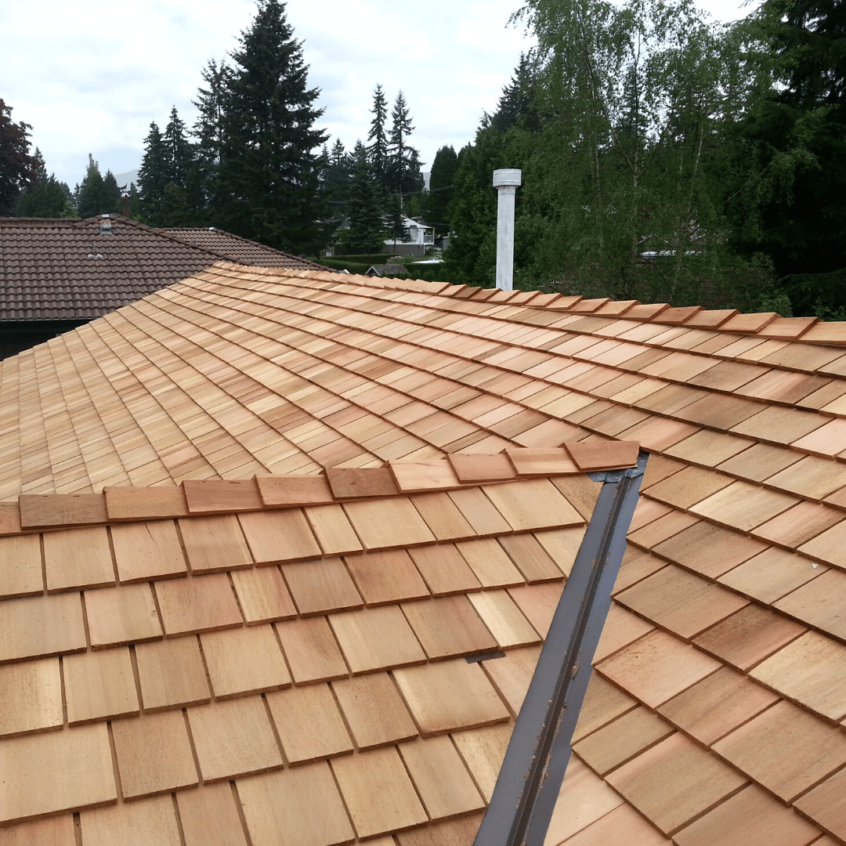Thinking about replacing your roof, or even just looking for new siding? You might be wondering what the difference is between shakes and shingles. The two are often used interchangeably. However, they’re actually very different materials. Shakes are made from split wood and come in a wide variety of shapes and sizes; shingles are uniform rectangular pieces. While they both offer a beautiful aesthetic and high durability, they do have many differences that you should consider when you’re choosing a new roof—and that’s precisely what we’ll focus on here!
Both roof shakes and roof shingles are made from split wood.
Both roof shakes and roof shingles are made from split wood. Shakes are split with a froe, while shingles are split with a hydraulic splitter.
Shingle manufacturers typically use cedar, redwood or pine as their starting material. Shake manufacturers typically use cedar trees at least 2 inches thick (or more) to make their products last longer than the average lifespan of similar types of roofs.
Roof shingles are uniformly rectangular.
Roof shingles are typically more uniform in size than shakes. This makes them a more attractive option for homeowners who want their roofs to look nice from the street. Many shingles are also made with a reflective coating that helps keep homes cooler in the summer and warmer in the winter.
When installed correctly, roof shingles offer higher fire resistance than shakes. Which is another big benefit of choosing them over shakes.
Roof shakes are more hand-split and rustic.
Roof shakes are more hand-split and rustic, which some believe offers more character. This also makes them more expensive than machine-made shinglles, but it’s not a factor for most people who buy them. The main difference is that hand-split shakes are made by splitting wood into thin strips and then rolling them into a form to make the finished product. They’re usually not as even in thickness as machine-made shingles, so you need to consider this when deciding how many you’ll need for your roof.
Shingles offer higher fire resistance than shakes.
Shingles are made with a fire-resistant material, while shakes are not. This makes shingles more likely to survive a fire than shakes. Roof shingles aren’t as attractive as roof shakes, but they offer higher fire resistance than their counterparts.
Shakes can be more expensive than shingles.
They take longer to make and install, which drives up their price. If you’d like a decked-out house with customized decor and stylish finishes, then this is the way to go! Roof shakes are also more durable than shingles; they’ll last longer in rain storms and storms.
However, there are disadvantages as well. It’s difficult work installing wood shakes on your own roof—you have to be very careful or else you can damage your home’s siding or its foundation when working at height from ladders or scaffolding (if you don’t have access directly onto the roofs).
Shingles are cheaper because they’re mass-produced so there’s less labour involved in making them—you only need one person instead of several people working long hours over days or weeks at a time like for shake installation projects (which requires extensive training).
Shakes weather with age, while shingles don’t.
Shakes, which are horizontal slats of wood, weather with age and take on a more rustic look over time. They are also more expensive than sheets of fiberglass or plastic. However, if you want a roof that will last for decades and be in style for most of that time period, shakes are the way to go—and they can usually be installed just as easily as shingles (though not seamlessly).
Shakes have disadvantages too: They’re more likely to be damaged by hail or high winds than other materials; they’re also vulnerable to ice dams that form on the underside of your roof when snow melts off during springtime thaws.
Conclusion
While they both offer a beautiful aesthetic and high durability, they do have many differences that you should consider when you’re choosing a new roof.
Both roof shingles and shakes are made of natural wood that has been split into thin sheets. However, their material is not the only difference between them. There are several other notable characteristics that you should consider when choosing a new roof for your home.
Roof shingles are a great choice for many homeowners. However, if you want something more rustic that will weather with age, then shakes may be the perfect fit.
If you’re looking for a second opinion or a roofing quote, contact Canuck Roofing today! Located right here in Burnaby, we’re always happy to help.

